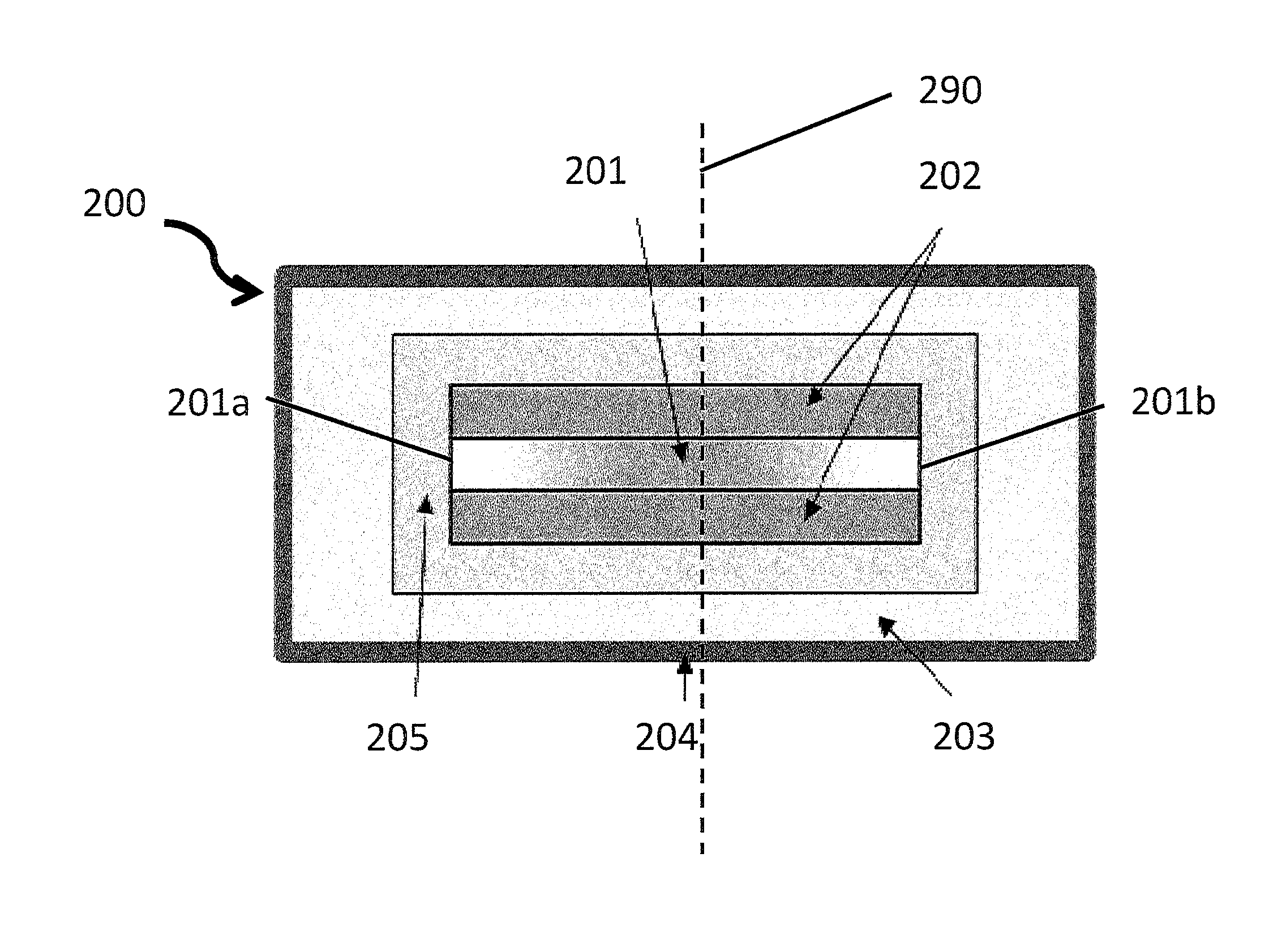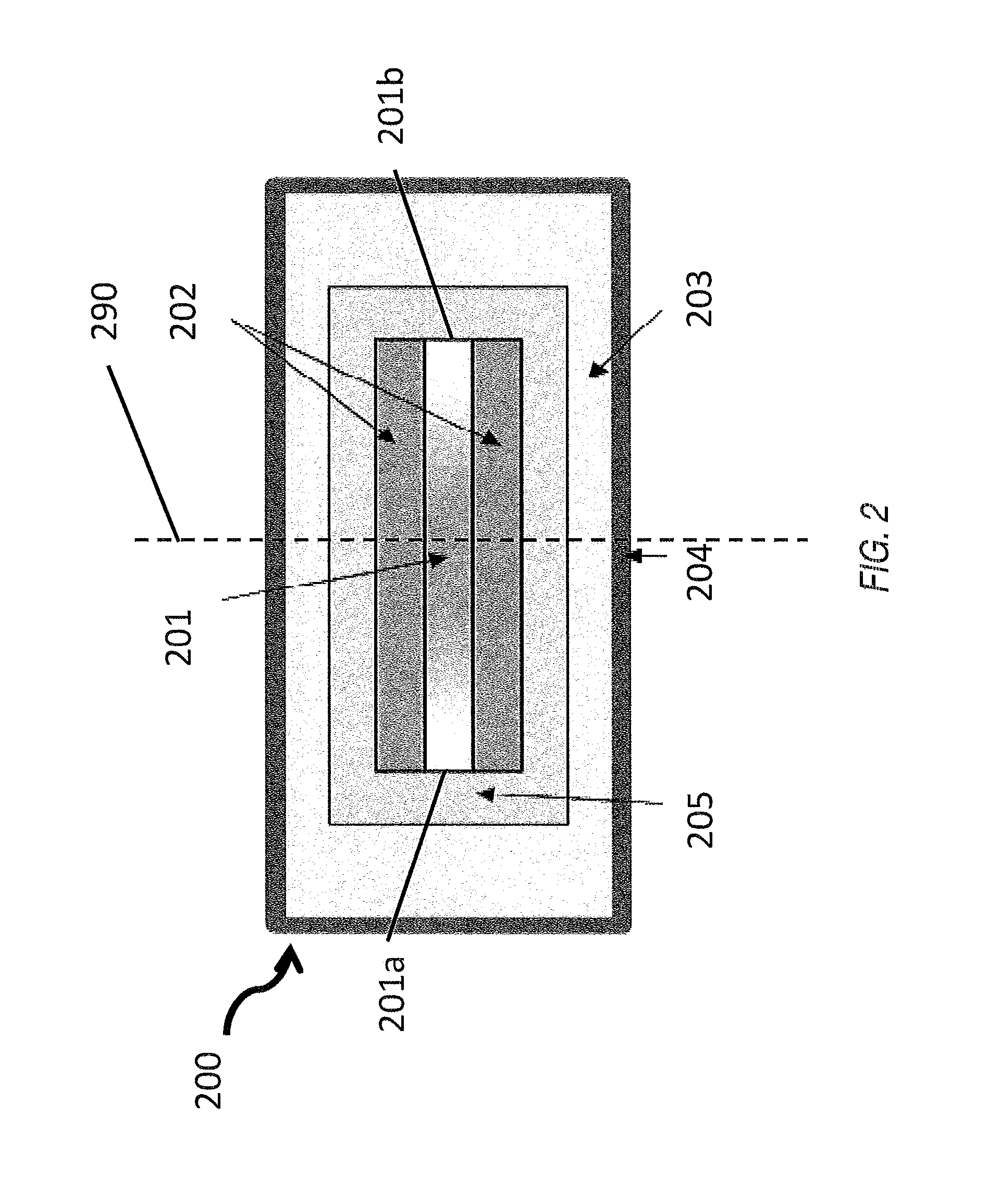Method and apparatus for high-power raman beam-combining in a multimode optical fiber
a multi-mode optical fiber and beam combination technology, applied in the field of fiber lasers and amplifiers, can solve the problems of power scalability, output power, lack of high efficiency, etc., and achieve the effects of eliminating higher-order stokes generation, high pump power, and high core-to-cladding area ratio
- Summary
- Abstract
- Description
- Claims
- Application Information
AI Technical Summary
Benefits of technology
Problems solved by technology
Method used
Image
Examples
Embodiment Construction
[0013]It should be understood at the outset that, although example embodiments are illustrated below, the present invention may be implemented using any number of techniques, whether currently known or not. The present invention should in no way be limited to the example implementations, drawings, and techniques illustrated below. Additionally, the drawings are not necessarily drawn to scale.
[0014]Due to the limited power scalability of existing fiber lasers, beam combining techniques can be used to scale fiber-based laser sources to high powers. One of such beam combining technique is spectral beam combining (SBC). SBC involves overlapping multiple fiber lasers, each operating at a specific wavelength, at a common location on a diffraction grating. The angles of incidence of the individual beams systematically vary with the individual wavelengths such that all beams are diffracted by the grating into the same direction. Laser output powers of the order of tens of kW can be obtained...
PUM
 Login to view more
Login to view more Abstract
Description
Claims
Application Information
 Login to view more
Login to view more - R&D Engineer
- R&D Manager
- IP Professional
- Industry Leading Data Capabilities
- Powerful AI technology
- Patent DNA Extraction
Browse by: Latest US Patents, China's latest patents, Technical Efficacy Thesaurus, Application Domain, Technology Topic.
© 2024 PatSnap. All rights reserved.Legal|Privacy policy|Modern Slavery Act Transparency Statement|Sitemap



